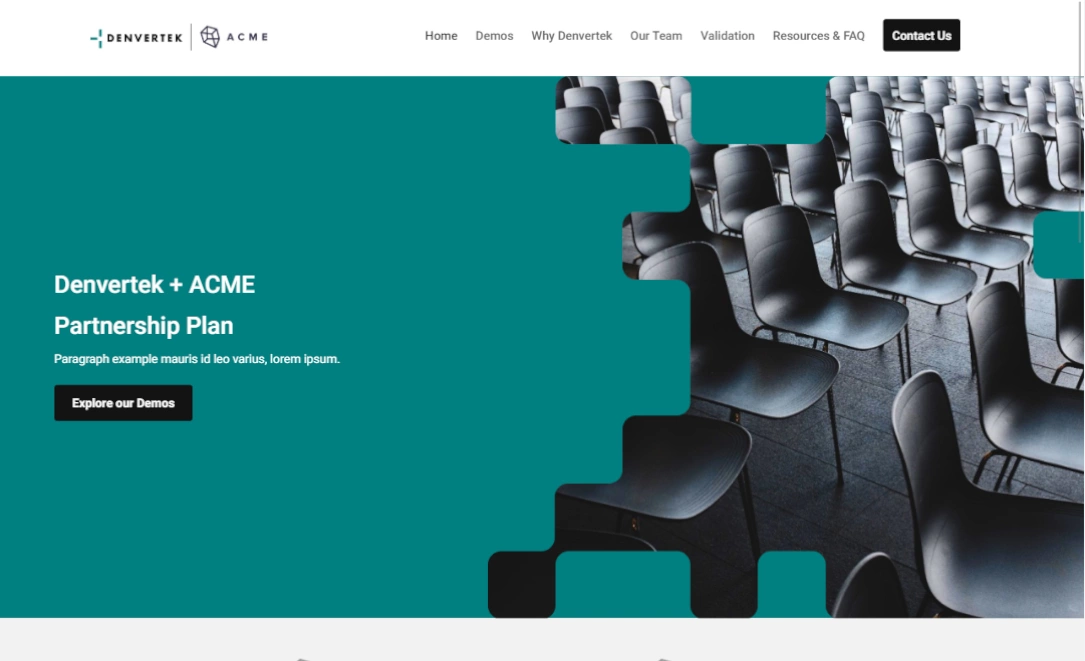Sales enablement tools give your sales team the resources they need to be successful in any situation. A dynamic selection of sales enablement tools is the most surefire way to guarantee that your team walks into all sales calls prepared to close.
Here’s how your team can make the most of sales enablement tools.
Sales enablement tools give your business the punch it needs
What are sales enablement tools?
While your sales team may already have the skills they need to build and maintain existing relationships with clients, data is the greatest tool a salesperson can wield. To improve key metrics of the sales process, they’ll need tools to make informed decisions during prospecting, lead conversion, and sales calls.
Sales enablement tools are any platform that serves to improve the sales process and, in the end, increase sales revenue. It includes marketing strategies, onboarding information, KPIs, purchase records, and much, much more. However, the largest tools to implement can be a CRM, sales content management system, or brand communication platform.
These tools should serve to align everyone involved in your sales process. This includes keeping them in the loop about consumer data, promotions, and new standard operating procedures (SOPs) that might affect conversations with customers. Sales enablement tools may even help you onboard new sales members and keep them up to speed.
Why is it important to choose the right sales enablement tools?
While we don’t doubt that your sales team has their sales muscles fully flexed at all times, it doesn’t hurt to have a little bit of help.
Choosing the right sales tools can help your team continue to be successful in the field with ease. Using sales enablement tools should feel like the added push that your sales team might need to close more deals of higher value. The right sales enablement tools will streamline customer onboarding, sales pitches, and procurement meetings.
The best sales enablement software should make it easier for you to keep track of performance while also offering pathways for growth. Look for some of these features to help your team make the most of the sales enablement tool that you choose:
- Insights and analytics that allow you to track KPIs
- Automated workflows that make it easy for teams to collaborate across channels
- Integrations with existing sales tools, like a CRM or POS system
- Intuitive admin features
Top sales enablement tools and platforms for your business
Excited to get the ball rolling? We thought so. Let’s discuss what tools your business needs to improve your sales process, especially in terms of organization, metrics, and content delivery.
Customer relationship management (CRM)
Building effective relationships with your customers is arguably one of the most important parts of increasing sales revenue. Knowing the ins and outs of dozens of different relationships can be a serious task for even the best salesperson. Storing all of this information in a spreadsheet can end up being a serious bottleneck for sales development and onboarding.
Luckily, CRM tools can help you manage all of those processes. CRM helps you track all of your communications, leads, and existing client needs in one easy-to-access spot. These tools are especially helpful because they compile data from a range of sources. This includes your calls, emails, business messaging, and even social media engagement.
CRM tools can take the guesswork out of follow-up. Every sales rep will have access to the CRM to get the information they need on a client. They can track where the client is in the sales cycle and past conversations. This allows you to make the most out of all of your sales efforts.
Best of all, CRMs are vital for tracking your sales performance. If you’re looking to improve your sales revenue, you need to improve three key metrics: activity, conversion rate, and average deal value. A CRM helps you track every customer, every conversation, and every deal. You can identify how you’re doing in a certain area with a CRM and make improvements where needed.
Some popular CRMs include:
- Salesforce: One of the most popular CRMs on the market, Salesforce offers Sales Cloud, which lets everyone on your team access customer data from anywhere. They even offer AI-driven prompts for intelligent insights. Their entire suite may even have everything you need when it comes to customer data and automation.
- Hubspot: Hubspot offers a CRM for businesses with contact management, email tracking, document sharing, and sales quotes. CRM functionality is free, and there are other premium features from their Sales Hub.
- Zoho: They offer an omnichannel cloud-based CRM with tons of customer data tools and reporting capabilities. They integrate with all of their other products and tons of third-party integrations, like Google Workspace, Microsoft Office, and even Salesforce.
Sales engagement platform
Maintaining communication with clients is a critical part of any robust sales strategy. While a CRM tracks and stores sales data, that doesn’t mean it can help you keep leads and clients engaged. Sales engagement platforms help with that.
Sales engagement platforms help salespeople engage with customers by organizing their communication and automating messages to streamline their work. These tools can personalize mass communication, schedule follow-up messaging, and sync outreach so that it happens across multiple channels. These built-in communication tools make your sales process more efficient.
Usually, these platforms integrate with your CRM, especially if they’re offered by the same company. This keeps data layered and consistent. It makes sense to include both of these in your sales enablement suite.
These sales enablement platforms are powerful tools that businesses across industries are using. 87% of sales development organizations have adopted the use of this technology, and 92% of those organizations consider them critical to success.
Here are some sales engagement platforms you might consider incorporating into your sales enablement strategy:
- Salesloft: Salesloft is a complete sales engagement platform that makes it easy for you to keep communication efforts effortless. Automation allows teams to build pipelines and nurture leads with certainty, while the build dialer and messenger include live coaching tools to keep conversations productive.
- Outreach: Outreach’s forecasting and sales analytics make it easy to keep strategies streamlined. Outreach pipelines are easy to build and optimize.
- Apollo.io: Apollo.io integrates with CRMs and connects you to a large global database of contacts. It allows you to listen to recorded calls and automate follow-ups with a host of communication efforts.
Content management system
A content management system (CMS) helps businesses keep track of the most compelling content to deliver at each point of their sales cycle, enhancing their entire sales enablement program. With a CMS, you can create and manage content on your website. You can build your website without any technical experience, and the back end is taken care of so you can focus on the client-facing parts.
Collateral can be a pivotal tool that your sales team uses to close sales and includes anything from product and service catalogs to research and development that supports your product. It helps your sales team demonstrate value and showcase industry expertise, two qualities that were widely identified as being influential in a client’s decision to close.
- Highspot: Highspot makes it easy to search through a large database of your collateral. The search bar and filter feature make finding information quick to keep sales calls on the go when you need a deliverable fast.
- Kaltura: Kaltura allows you manage, publish, and monetize video content from their cloud platform. They offer a fantastic CMS with everything you need to enhance your video distribution and make sense of performance data.
Microsite builder
Keeping brand communication efforts robust is a must, but without the best sales enablement tools, it can be challenging and time-consuming. While a content management system can help you deliver content to an existing audience, a microsite builder can help you reach a new audience.
Zoomforth is the easiest way to deliver and create personalized brand communication with beautifully designed microsites. The intuitive design platform makes it easy to create custom sales pitches, onboarding sites, and event pages. Like a CMS, you can store and manage your content on the microsite with little technical knowledge. With analytics tools, you can see which content customers engaged with the most at a granular level.
Security features also ensure that only the right people have access to the material at any given moment. This is important if you’re creating a microsite for a client or a learning platform for your team.
The uses of a microsite are limitless, and Zoomforth allows you to create as many microsites as you want. You can create your own templates to make the microsite creation process even easier.
Diversify sales enablement and brand communication with a microsite by Zoomforth
If you’re looking to improve your sales revenue, investment in these tools may be what you need. Building your sales enablement suite is a great step toward sales success.
Microsites keep content engaging and personalized, all while leveraging the support of real-time data that takes the guesswork out of follow-up and fine-tuning. Best of all, these advanced analytics return granular insights about the ROI you are seeing across content.



